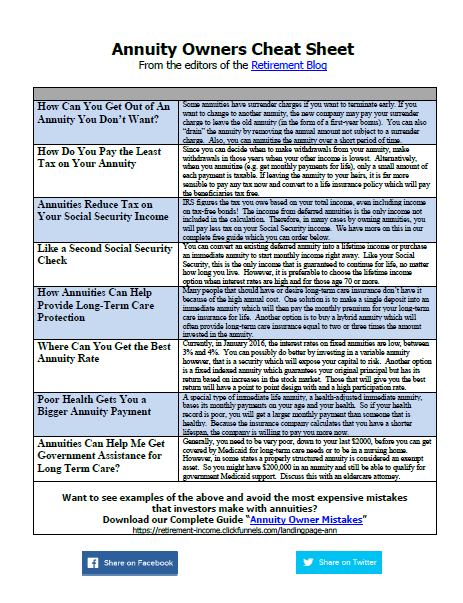Medicaid, a federal program to provide health care to the destitute, will cover your lasting care for free but only once you have a minimum of assets, essentially no assets. But immediate annuities can be a planning tool to allow you to keep assets and also qualify for Medicaid.
The process of protecting these excess assets for beneficiaries or perhaps a spouse and avoid Medicaid taking these assets has become known as 'Medicaid Planning'. Using an immediate annuities has turned into a way of protecting excess possessions while claiming Medicaid long-term care benefits. Let's see how…
Regarding married couples
When the wife or husband claims Medicaid assistance for long term care, the State in which they reside can consider the couple's assets with regard to first paying for Medicaid's assistance. The particular healthy spouse is given a percentage of assets to live on but any excessive assets can be claimed by Medicaid. However, the income stream of the healthy spouse, if it belongs solely to that spouse, is not an "asset" that Medicaid can attach.
So it is possible for the healthy spouse to take assets and purchase an immediate annuity in his own name and that stream of payments will be protected from Medicaid. This can be done even after one spouse begins receiving Medicaid support and then funds jointly owned by the spouses can be used to purchase the annuity and thereby sheltered joint assets.
Note that rules about immediate annuities and their relation to Medicaid planning varies by state. The federal rules are the general rules with each state defining these rules and adding their own details.
The Deficit Reduction Act of 2005 (DRA) arranged requirements that an immediate annuities must have being excluded from Medicaid's claims. They are:
• The immediate annuities must be irrevocable
• The immediate annuity cannot include a term longer than the purchaser's life requirement and the payments expected during the annuitant's life expectations must at least equal the premium on the annuity,
• The payments must commence immediately, so a deferred annuity will be excluded, and
• Unless there is a spouse, a small, or disabled child, the state must be named as the the beneficiary up to the amount the State Medicaid program has provided for care
According to a '06 amendment to the DRA, the healthy spouse has to name the State as the remainder beneficiary pertaining to costs incurred by the State health programs recipient as well as herself in the event that she ever receives Low income health programs. But this would only enter in to effect if that spouse have been to die before the assured payments under the immediate annuities had ended.
For single individuals
Whenever a single individual seeking low income health programs purchases an immediate annuities, the interest income from the immediate annuity (and virtually all other income) must be paid to the state Medicaid program. When the Medicaid recipient dies, any remaining money in the annuity goes to the state to pay unpaid nursing home bills. Everything left over can then go to annuity beneficiaries.
Be sure to check for current guidelines and with an Elder Law attorney regarding the use of immediate annuities for low income health programs planning in your state.

Leave a Reply